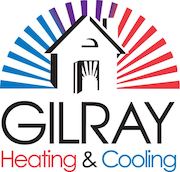A relaxing bedroom is a key part of a good night’s sleep, and temperature is one of the strongest influences on comfort. Adjusting the temperature of your room every night by just a few degrees can benefit the length and quality of your sleep. But just like how people have different comfort preferences, they also have varying preferences for sleep.
We’ll discuss what temperatures are ideal for sleep and why. Then, we’ll offer some recommendations for HVAC equipment or accessories that might help improve sleep.
Your Body Is Designed to Cool Down During Sleep
According to the Sleep Foundation, the ideal bedroom temperature is about 65 degrees. Your specific preferences will have an impact, so anywhere around 63-67 is a good rule of thumb. But why is a cooler temperature better to sleep in?
Sleep occurs in cycles, and this pattern is known as a circadian rhythm. Our bodies take in information such as the quantity of light and heat around us to keep the circadian rhythm in sync with what’s required for healthy sleep. Since the sun’s warmth disappears at night, the circadian rhythm can interpret cooler temperatures as a better environment for sleep. This is why a cooler, darker bedroom is easier to fall asleep in than a room that’s hot and well-lit.
As you fall asleep, your body stops a lot of automatic processes that help balance your internal temperature. For example, sweating helps dissipate excess heat while shivering is the muscles’ way of warming themselves up. When you don’t regulate the temperature of your bedroom, even little changes can be noticeable enough to wake you up.
Keep Bedrooms Warmer for Infants and the Elderly
Infant children are still developing, and their smaller bodies are more reactive to changes in temperature. Slightly warmer temperatures around 67-69 degrees are best, but make sure you’re also taking sleepwear and blankets into account. Heavy layers can be too warm, and any parent can tell you that infants only have one way to express dissatisfaction.
Tips for Fine-Tuning Sleep Temperatures
If you’re having trouble maintaining your ideal sleep temperature, there are a few pieces of HVAC equipment that can make a noticeable difference. These systems are particularly useful for families, since different preferences can lead to disagreements over the nighttime thermostat setting.
Zoning systems: A zoning system uses a series of dampers and levers in your ductwork to adjust airflow. If you want to adjust the temperature for a particular room or space in your home, a zoning system makes it quick and convenient. Members of your family that like extra heat or air conditioning at night can use a zoning system to provide their ideal sleep temperature.
Ductless mini-splits: Sometimes existing equipment and personal preferences just aren’t compatible. Thankfully, a ductless mini-split can generate fine-tuned comfort for single rooms or smaller areas. As the name suggests, you don’t need any additional ductwork, which helps save on installation costs. These compact systems are great for rooms near unfinished spaces like the garage or attic.
Smart thermostats: These programmable thermostats are one of the simplest ways to make precise, energy-efficient adjustments to the indoor temperature. Intelligent programming can learn how you use your HVAC system and suggest the best daily schedule. So, if you want a cooler bedroom at night, a smart thermostat can automatically cool things down near bedtime. They’re compatible with zoning systems and mini-splits too, enhancing your control over the temperature in every room of the house.
Get a Good Night’s Sleep with Gilray Heating and Cooling
If your HVAC system is the reason you can’t fall asleep, let Gilray Heating and Cooling know. We can offer suggestions and quality products ideal for maintaining comfortable nighttime temperatures. Schedule an appointment by calling us at 715-301-0727.
